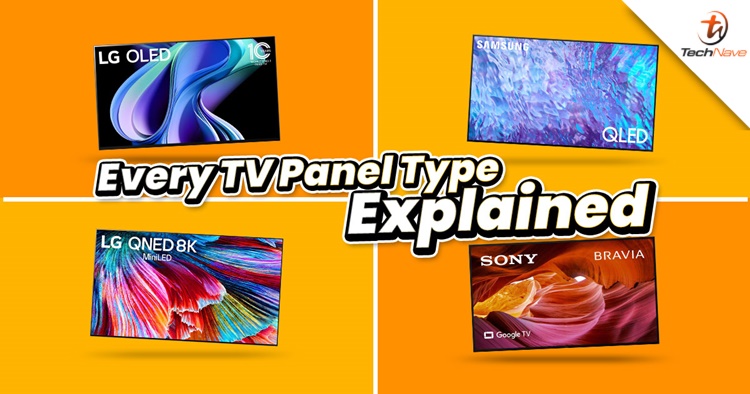
Are you looking for a new TV? Chances are you have been visiting a few Home Expos around Kuala Lumpur or third-party stores and getting bombarded by all the different types of display labels. You have Samsung's QLED, LG's QNED, and there's also the OLED TV, so it can get pretty confusing for the average consumer.
Well, no worries. This is what you're here for, to understand the basics and how to differentiate each type. Comparing the Malaysian market and other foreign countries, ours is thankfully not that cluttered yet since it takes a while for the latest technology to come here. Without further ado, let's begin.
LED - Your basic TV starter
To begin, LED (Light Emitting Diodes) was once a sought-after TV technology over a decade ago and is currently the basic lineup of getting an affordable TV. In Malaysia, you will usually see the label "4K UHD" in every TV brand online and in physical stores. All 4K UHD TVs use LCD (Liquid Crystal Display), which has a pretty good viewing experience and is very affordable, starting from RM2K and above, depending on the TV size.
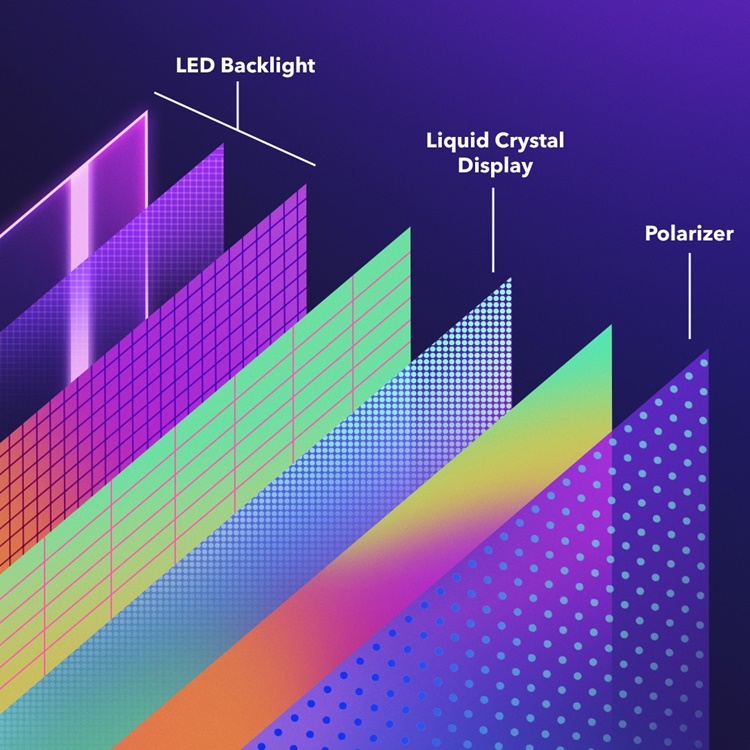
LED is often paired with LCD
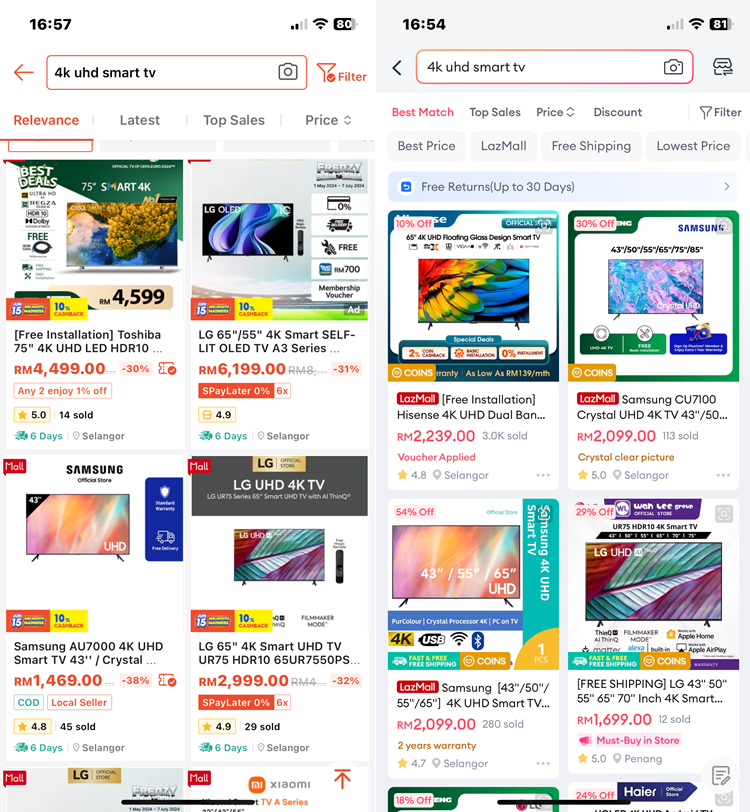
Often marketed as 4K UHD TVs in Malaysia
On the downside, 4K UHD TVs' weakness of getting a ton of reflection from nearby windows in daylight is very noticeable. In a brightly lit living room, reflections can make it a headache to watch the TV, so you usually have to close the curtains to prevent sunlight from coming in. In a controlled environment, having a 4K UHD TV is considered good enough, but compared to other higher-tier TVs, its image quality loses out.
QLED, QNED and XLED - Your second (expensive) options
To solve this problem, this is where QLED and QNED come in (we will talk about XLED later). The Q stands for Quantum dot and in this scenario, Samsung and LG use these two marketing terms, respectively. Both technologies are more or less the same. But Samsung uses Quantum dot LED, which has nanoscale, ultra-fine semiconductors that emit different colours of light, depending on the particle size. On the other hand, LG uses Quantum Nano LED, a combination of quantum dot and NanoCell technology with mini-LED backlighting.
Quantum Dot technology explained
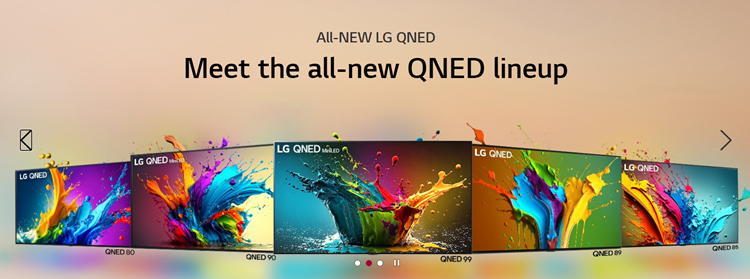
Prior to the LG QNED 2024 TV lineup, LG TVs didn't have the Mini LED feature
QLED and QNED can make content on the TV brighter and are ideal for a brightly lit living room. Compared to LED TVs, colours are more accurate and vibrant, while the contrast is enhanced further. Despite this, the blacks still emit the "white noise or halo" effect, which is called blooming and can be quite annoying (if your eyes are sharp). Moreover, both QLED and QNED are known to cause motion blur, which is the jittery movements you see from fast-moving objects or subjects. Thankfully, most modern TVs nowadays have Filmmaker Mode to solve this issue.
QLED and QNED TVs can provide better viewing experiences in watching movies and sports, as well as with gaming (even for an underpowered Nintendo Switch). However, QLED and QNED TVs are pretty expensive. It can easily start from at least RM5K up to five figures, so that's a hefty investment for TV enthusiasts. Additionally, Samsung has its Neo QLED TVs, which are better refined (blooming reduced) and go up to 8K resolution but are much more expensive.
By the way, XLED is an exclusive brand scheme by Sharp and you probably have come across Aquos XLED. The X doesn't really mean anything but it's a reference to its "True Brightness X True Colour" marketing which combines the best features of an LCD and OLED TV. According to Sharp, its XLED TV can control over 2000 backlight dimming zones with precision. There's also a Deep Chroma QD for providing "True Colour" which we also assume True Blacks like OLED TVs. Of course, an XLED TV is expensive too. When it first launched last year, it had an early bird promo price of RM15,999.
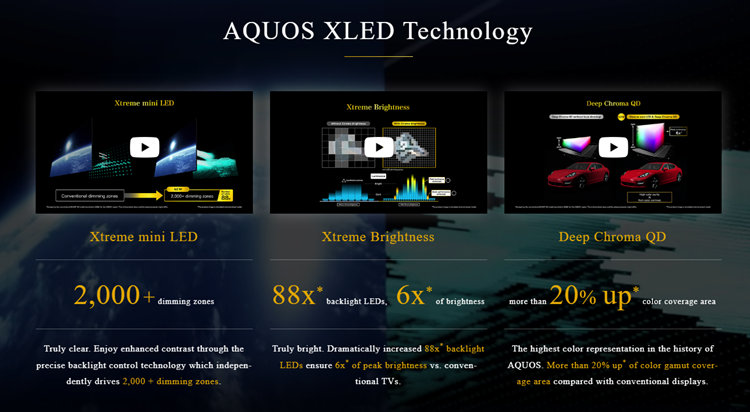
XLED technology by Sharp
OLED - The best one but also the most expensive
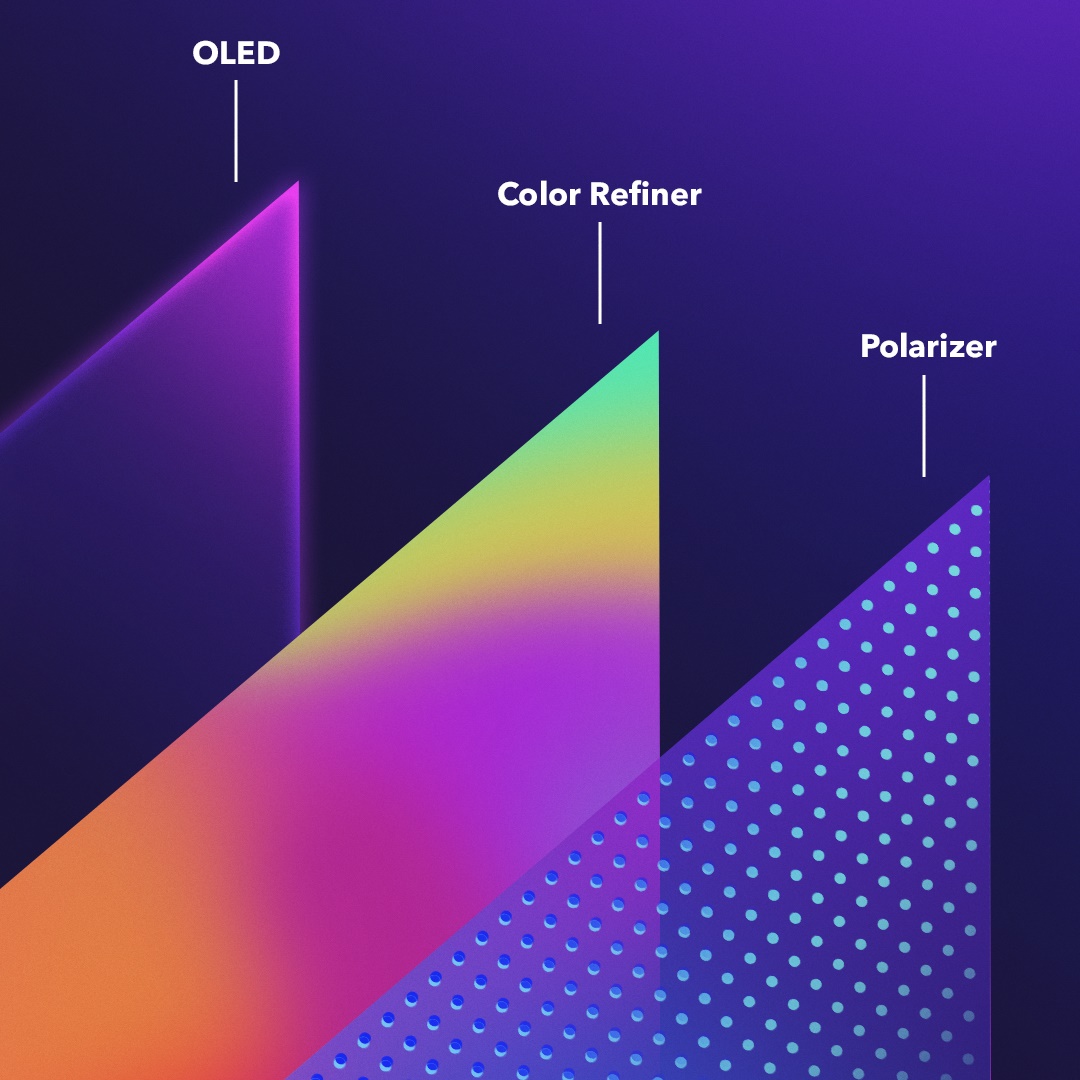
OLED doesn't need any backlight
You probably have also seen OLED (Organic LED) TVs from different brands, particularly from Sony, Samsung, LG, Panasonic and others. It's also very expensive due to its technology. But hey, you get what you pay for. OLED TVs have no blooming issues at all because the technology uses individual LEDs to produce particular colours of light to be more precise. In return, the pixels aren't all turned on at once, so the blacks have no halo effects.
Compared to QLED and QNED, OLED TVs generally have even better visual presentation with true blacks without altering the original colours and vision of what the directors intended. That said, OLED TVs can still be affected by nearby sunlight from windows. There's also the issue of burn-in, which can make an image "stuck" on a certain spot if turned on for too long. However, modern OLED TVs nowadays have a fixer to refresh the pixels in the Settings menu.
OLED is recommended for cinephiles
Full Array LED, Mini LED and Micro LED - Other similar competing technologies
Full Array explained
So QLED, QNED and OLED are usually the popular ones you see in the Malaysian market. But there are other TV panel types too, such as Full Array, Mini and Micro LED. These TV technologies are enhanced versions of LED and arguably better than QLED and QNED in some aspects.
In Sony's case, its Full Array technology uses LEDs across the whole screen instead of the conventional one row of LEDs at the bottom. This creates more intensity and the light goes to whatever is played on the display. Mini LED is also similar to Full Array, but the LED backlight is much smaller and denser, thus more precise in light control. In a way, it's also similar to OLED, but the latter is still king.
Mini LED explained
Micro LED explained
On the other hand, Micro LED can be considered a better version of Mini LED because each pixel is an LED and can emit its own light without any need for a backlight or colour filter. This results in incredible brightness, colour control and contrast. But it can be more expensive. Samsung is currently the only company known for having Micro LED TVs, which are only available in larger screen sizes for now (from 75-inch above).
Conclusion - Prioritise your wallet or TV quality
So, these are pretty much the current TV panel labels you will see in Malaysia. The bottom line: 4K UHD (or those common LED) TVs are affordable and usually good enough for a controlled environment but lack image quality compared to other panel types. QLED, QNED, Full Array, Mini LED and Micro LED TVs are truly the good stuff, but they come at a price.
At the moment, an OLED TV is the one that can give the best cinematic experience. I reviewed the LG OLED evo C3 just last year and there's still seriously quite nothing like it. MLA (Micro Lens Array) OLED and QD OLED can potentially be the next best successor, but that's another topic for another day.
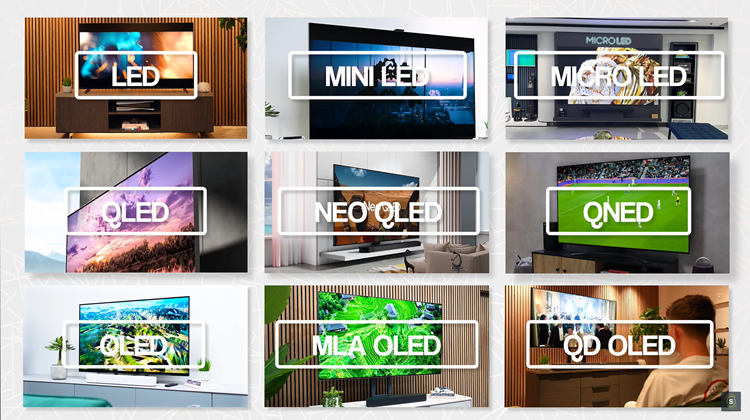
All the current TV panels for the market for now
So that's our TV buying guide in Malaysia at the moment. Perhaps we will update this page again when MLA OLED and QD OLED become mainstream. In the meantime, you can also check out our other guide for 6 Things You Need To Look Out For On Shopping For A New TV. Stay tuned for more tech guides at TechNave.com.




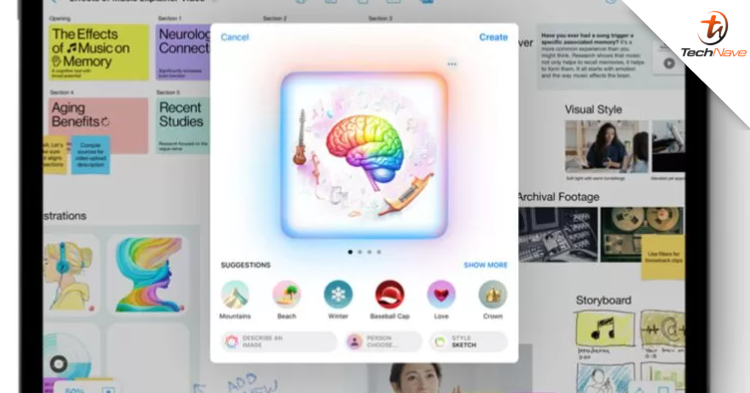



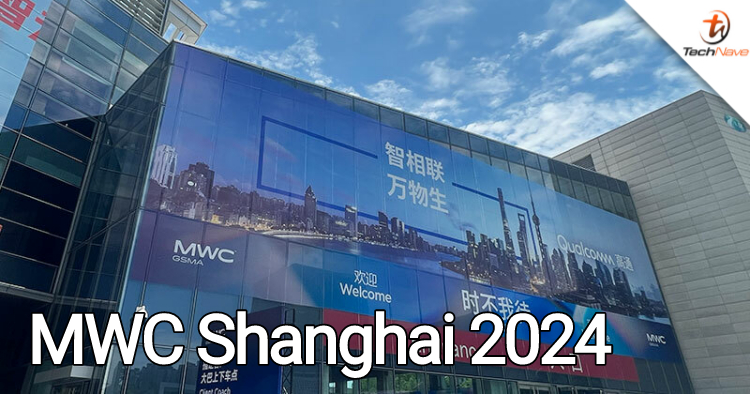
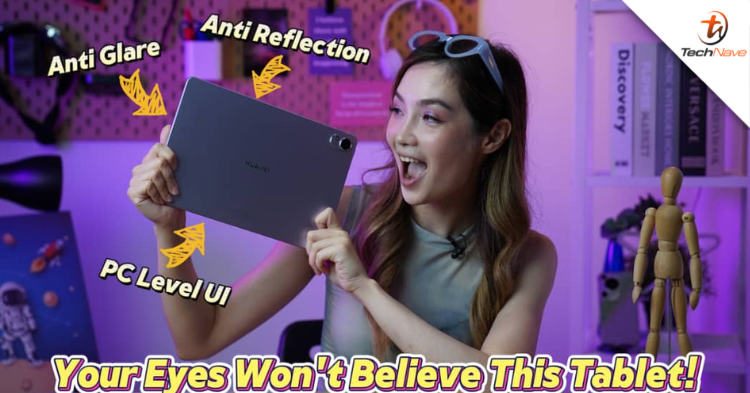
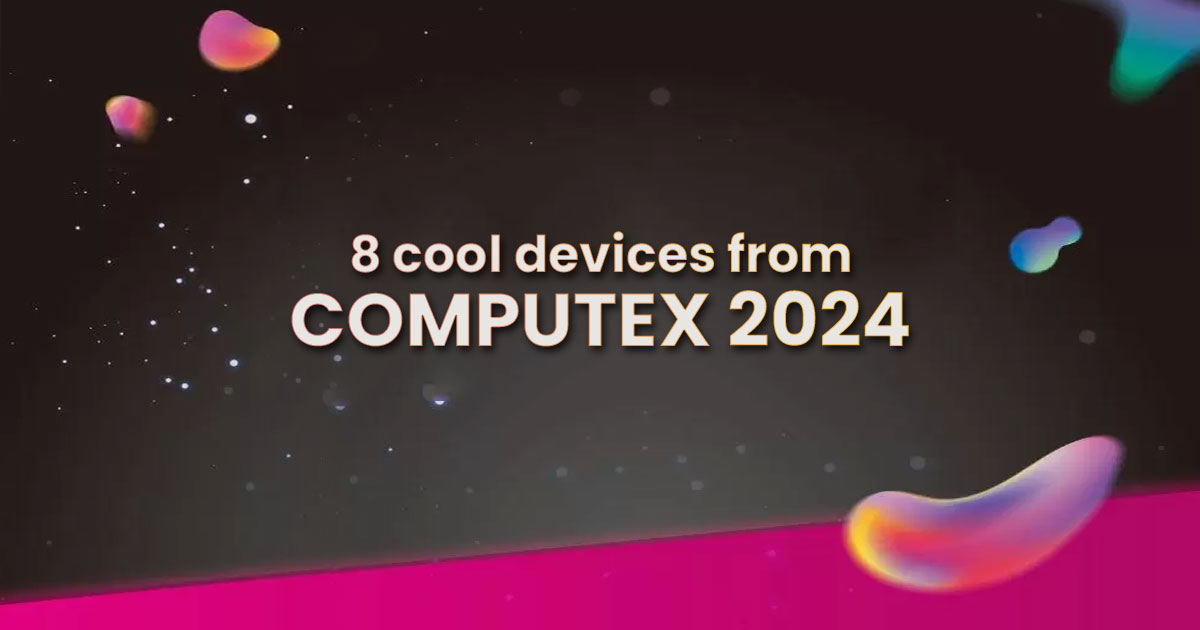
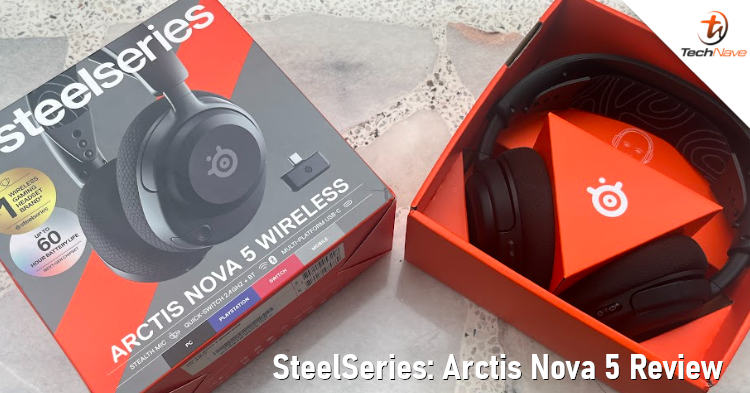
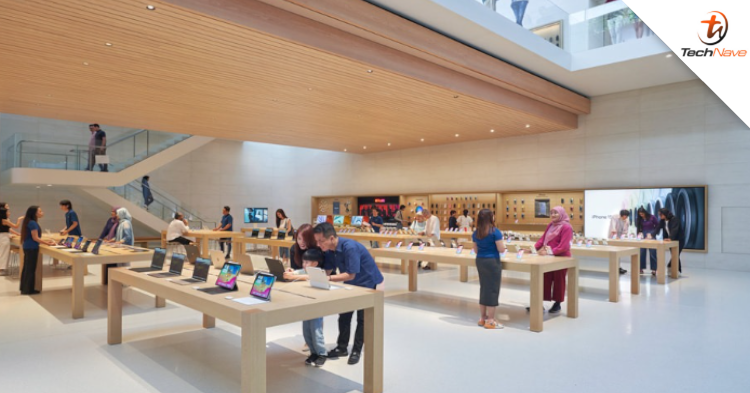

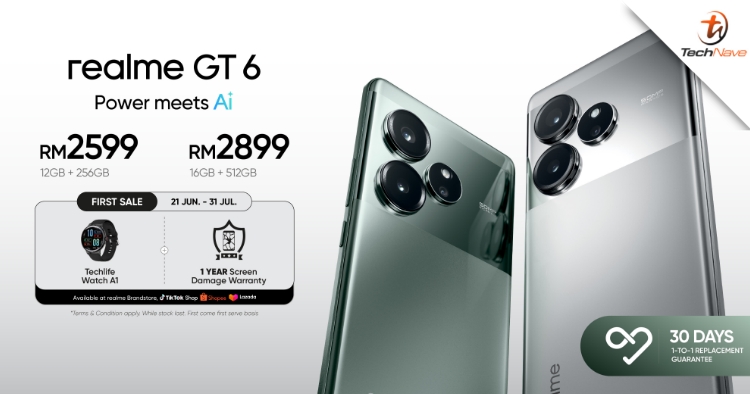
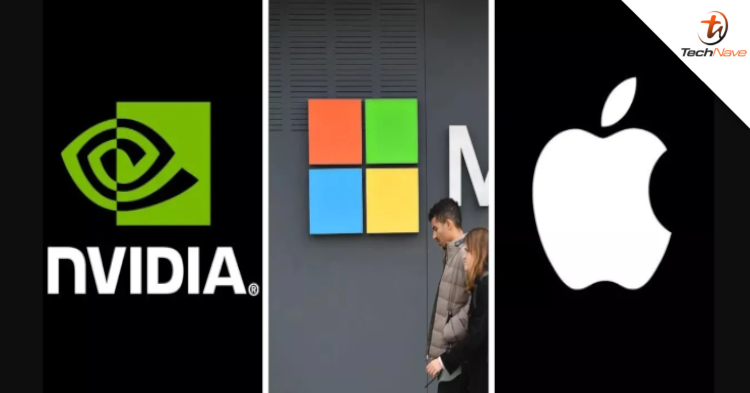
COMMENTS